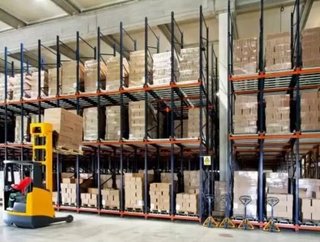PART ONE: Optimisation Squared

As a result of the economic downturn that has now ended, we've seen impressive improvements in supply chain capabilities across the board, but particularly in warehouse management and transportation management; two functions that have historically been viewed as time and cost-intensive.
It's easy to be nimble if you're willing to expedite shipments or work overtime in the warehouse, but those activities are expensive. The real challenge is how to be agile, while keeping costs low.
More and more leading companies are using advanced supply chain solutions across their warehouses and transportation networks to achieve this goal in their daily operations.
For example, in the area of warehouse management, Advance Auto Parts recently leveraged a suite of solutions to cut replenishment cycle time by at least 50 percent, while simultaneously increasing product breadth in its stores by 20 percent.
Improvements in warehouse efficiency have directly led to significant sales gains because products are readily available when consumers are shopping.
In the transportation management arena, Kimberly-Clark Corporation replaced its legacy planning system with JDA solutions that apply logic and business rules to automate approximately 80 percent of its load-planning activities.
In addition to reducing manual labour, the company is saving an incremental $12 million to $14 million a year in freight charges, including $8 million in the first year of implementation. As these and other supply chain leaders leverage new technologies and higher-impact processes to optimise their warehouses and transportation networks, the obvious question is: What's next?
Once performance has been optimised within these two functions, the next supply chain revolution will involve bringing them together and optimising their shared results. By tightly integrating all activities from the time an order reaches the warehouse through customer delivery, companies in every industry can take agility and cost control to an entirely new level.
Two Functions, One Perspective
The first step in achieving this ambitious vision is ensuring that warehouse managers and transportation managers have concurrent visibility to demand. The moment a customer order is generated, planners in both the warehouse and the transportation function should begin aligning cross-functional resources to fill and deliver that order in the most timely, cost-effective way.
Neither discipline should be impeded or delayed because of an absence of order data. Since most companies currently base their warehouse and transportation operations on a set of serial processes, this requires a huge change in mind-set.
Ultimately, transportation planning should still drive warehouse execution for the simple reason that warehousing is a location-specific function, while transportation is a network-level function. An intelligent transportation plan comes up with dynamic strategies for maximising efficiencies across the entire network.
For example, by scheduling a soft transfer to a distribution centre (DC), picking up an order at the DC and delivering it to the customer as a seamless process.
It only makes sense for the DC to base its processes on the capabilities of the transportation network, so valuable time won't be invested picking and packing orders that will be sitting on the loading dock, while trucks wait for other orders that aren't filled yet.
Intelligent transportation planning will always be the driver, but providing warehouse planners with concurrent order visibility allows much more effective coordination across these two functions.
Transportation planning can be enabled and enhanced with defined warehouse-level constraints that result in flawless, cost- and time-efficient execution. In addition, demand visibility ensures that the warehouse staffs is always working on the most critical orders, enabling high service and high profitability.
- Maersk partners with JDA Software to accelerate digitisationDigital Supply Chain
- JDA Software announces JDA ICON - The Intelligent Supply Chain ConferenceTechnology
- JDA Software: navigating the digital disruption of supply chain and procurementTechnology
- JDA Software recognised by Gartner as supply chain leaderDigital Supply Chain






